What do Coral Need?
 We are often asked, “What do I need to keep a reef aquarium?”
We are often asked, “What do I need to keep a reef aquarium?”
The Three Key Factors
It can seem there are an overwhelming number of products needed to have a reef aquarium. However, while many things such as kalkwasser reactors, dosing pumps, specialized additives, and controllers can make it easier, they are not absolutely necessary. Ultimately, there are only three requirements for corals to thrive. You can have a beautiful reef aquarium by just paying attention to these three factors.
1. High Output Lighting with Adequate Near-UV Spectrum Light
Lighting will likely be the biggest investment of any new reef aquarium. There are so many lights to choose from that the task can prove intimidating. The best lights don’t just have a lot of output, as measured imperfectly as wattage, lumens, lux & PAR, but the light needs to fill the entire aquarium with well-blended, even lighting. They also need to have the right spectrum, with the near-UV end of the spectrum (sub 420nm) being the spectrum most lacking in many lights.
We recommend
Kessil LED lights because, along with being powerful and controllable and having well-blended LEDs, they have adequate sub-420nm light. We have found that aquarists with no experience can easily have success with Kessil lights while there is a big learning curve for many other types of LED lights.
To find the best light for your reef tank, please refer to the MarineAndReef.com
Reef Aquarium Lighting Chart. When choosing a light please keep in mind we are assuming that the corals requiring the most light could be in the bottom corner of the aquarium. If you go for a less powerful light than we recommend, put the corals needing the most light at the top near the light.
Further Reading:
-
What are Wattage, Lumens, Lux, and PAR?
-
Are There Reasons To Buy Anything Other Than An LED Light For Your Aquarium?
2. Water Movement That Replicates the Ocean
Corals are accustomed to the random tides and sloshing movement of the ocean waves. The water movement moves the accumulated detritus away from the corals, brings nutrients to the corals, and, for lack of a better term, exercises the corals. The movement of water at the surface also oxygenates the water.
It is very important to replicate this movement in the aquarium. We have several options in our
Flow Pumps & Wavemakers section. Gyre-style pumps are a great option. The
Maxspect Jump Gyre Flow Pumps and
IceCap Generators are quality, reasonably-priced options. Using the included controller you can program the pumps to create waves and utilize crossflow technology to distribute flow evenly and eliminate dead spots. With more traditional and simpler pumps, you might consider the
Hydor Koralia Evolution Pumps. We sell them in combination with the
SmartWave Circulation Pump Timer to get the wave effect. Some of the more expensive pumps, but of high quality and controllable, include the
Tunze Turbelle Pumps and the
Reef Octopus OCTO Pumps.
To figure out how much flow you'll need, please read our
Tank Turnover Article.
Further Reading:
-
Pump Overview
-
Why Use a DC Aquarium Pump?
-
Why Should You Use A Wavemaker
3. Superior Water Quality
Despite human activity, the ocean is still a pretty clean place. When it isn’t, corals do not survive. Good water quality in an aquarium is a result of using clean water, filtration and supplementation.
Always start with RO/DI water. The first stage of filtration is regular water changes. In small aquariums with less than 20 gallons, water changes alone can provide adequate filtration. On any system more than 20 gallons we recommend a good protein skimmer and some method of removing nitrate. We like
Reef Octopus Protein Skimmers. These skimmers come in many sizes for all kinds of aquariums. We also recommend choosing one size larger than the specifications would lead you to believe. In addition to a skimmer we recommend some method of controlling nitrate levels. You can use a
Lifegard Turbo Reactor with
NPX Bioplastics.
Supplementation is the process of adding good things to the water. Over time coral grows and takes specific elements out of the water. Those elements need to be added back to the water. We recommend the
Two Little Fishies C-Balance two-part calcium and alkalinity maintenance system. It adjusts calcium, magnesium, and strontium ions to natural seawater ratios, and achieves a balanced ionic residual There is no reason to add C-Balance if the alkalinity is 7-9 DKH. Often no supplementation is needed for as long as the first 6 months of setting up an aquarium. Use a
Hanna Seawater Alkalinity (dKH) Colorimeter Checker to test for alkalinity. Add alkalinity when you notice an alkalinity drop.
Further Reading:
-
Refugium Overview
-
Media Reactor Overview
-
Aquarium Water Changes: Making It Simple







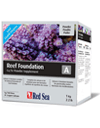
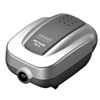


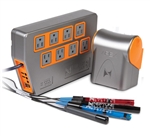

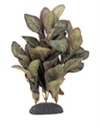

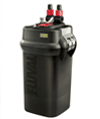

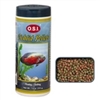





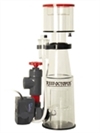




 We are often asked, “What do I need to keep a reef aquarium?”
We are often asked, “What do I need to keep a reef aquarium?”